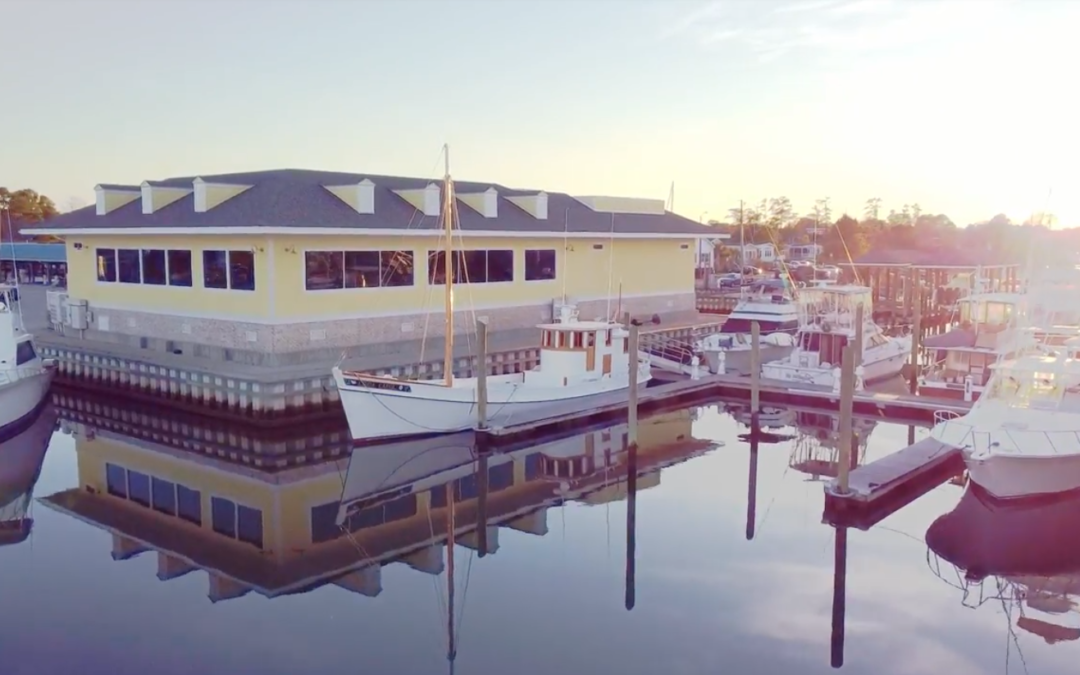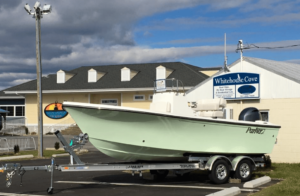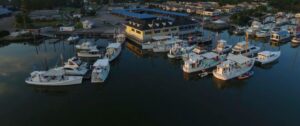Chesapeake Bay Pump-out Tips
Proper waste disposal on boats plays a critical role in preserving the pristine beauty and ecological health of our waterways, particularly the Chesapeake Bay. As boating enthusiasts, it is our responsibility to understand and prioritize the impact of our actions on this fragile ecosystem. The Chesapeake Bay, with its rich biodiversity and delicate balance of aquatic life, is highly susceptible to pollution and the adverse effects of improperly disposed waste. This is where pump-outs come into play as an essential tool in protecting and maintaining the cleanliness and health of our beloved Chesapeake Bay.
Pump-outs serve as a crucial solution to address the environmental challenges associated with waste disposal on boats. By utilizing pump-out facilities, boaters can safely and efficiently dispose of their vessel’s waste, preventing harmful substances like sewage and chemicals from entering the water. The Chesapeake Bay’s sensitive ecosystem is highly vulnerable to pollution, and even small amounts of waste can have devastating consequences on its aquatic life, water quality, and overall balance. By recognizing the relevance of pump-outs and embracing responsible waste management practices, we can collectively ensure the long-term health and sustainability of the Chesapeake Bay and other waterways that we cherish.
Ready to reserve your Chesapeake Bay a boat slip? Contact Whitehouse Cove Marina in Poquoson about slip availability. Call 757-231-1006 or request a reservation online here.
The Basics of Pump-Outs on the Chesapeake Bay
What a pump-out is and how it works
A pump-out is a mechanism designed to remove waste from a boat’s holding tank and transfer it to a designated waste storage facility on land. The process typically involves using a suction pump to extract the waste through a dedicated pump-out fitting or port. This fitting is often located on the deck or hull of the boat. Once the waste is extracted, it is transported via hoses to onshore storage tanks or sewage treatment facilities for proper disposal. Pump-outs are designed to prevent the direct discharge of untreated sewage into the water, helping to minimize pollution and protect the marine environment.
Different types of pump-out systems available
There are several types of pump-out systems available, each with its own advantages and considerations. One common type is the marina-based pump-out system, which is typically available at marinas and harbors. These systems feature dedicated pump-out stations equipped with pumps and hoses for boaters to access and use. Another type is mobile pump-out services, where specialized boats equipped with pump-out equipment visit individual vessels to provide waste removal services. This option is particularly useful for boaters without convenient access to a marina. Additionally, self-service pump-out stations allow boaters to perform pump-outs independently using installed equipment and instructions. These stations are often found in high-traffic areas and offer convenience for boaters who prefer a hands-on approach.
Importance of utilizing pump-out facilities for waste disposal
Utilizing pump-out facilities for waste disposal is of paramount importance to protect our waterways. Proper waste disposal helps prevent the contamination of the surrounding environment, preserves water quality, and safeguards the health of aquatic life. By opting for pump-outs instead of discharging waste directly into the water, boaters contribute to the overall cleanliness and ecological balance of our marine ecosystems. Pump-outs play a crucial role in minimizing nutrient pollution, harmful algal blooms, and the spread of waterborne diseases. They also support compliance with local, state, and federal regulations that require responsible waste management practices on boats. Ultimately, utilizing pump-out facilities demonstrates our commitment to preserving the natural beauty and long-term sustainability of our waterways for future generations to enjoy.
Why Pump-Outs Matter on the Chesapeake Bay
Chesapeake Bay environmental consequences of improper waste disposal
The Chesapeake Bay is a delicate and unique ecosystem that is particularly vulnerable to the environmental consequences of improper waste disposal. When untreated sewage is discharged directly into the bay, it introduces excessive nutrients, such as nitrogen and phosphorus, into the water. These nutrients fuel the growth of harmful algal blooms, leading to decreased oxygen levels and creating “dead zones” where marine life cannot survive. The excessive nutrient pollution caused by improper waste disposal disrupts the natural balance of the Chesapeake Bay’s ecosystem, jeopardizing the health of fish, shellfish, and other aquatic organisms that rely on clean water for their survival. By utilizing pump-out facilities and preventing the direct discharge of waste, boaters can help minimize nutrient pollution and contribute to the restoration and preservation of the Chesapeake Bay’s fragile ecosystem.
Potential health risks associated with untreated sewage in the Chesapeake Bay.
The potential health risks associated with untreated sewage in the Chesapeake Bay are significant. Exposure to water contaminated with untreated sewage can lead to the spread of waterborne diseases, posing risks to both human health and marine life. Bacteria, viruses, and parasites present in untreated sewage can contaminate shellfish beds and recreational swimming areas, making them unsafe for human use. Consuming contaminated shellfish or coming into contact with contaminated water can lead to illnesses such as gastrointestinal infections, hepatitis, and skin rashes. Additionally, the degradation of water quality caused by untreated sewage impacts the health and well-being of marine species that call the Chesapeake Bay home. By utilizing pump-outs and ensuring proper waste disposal, boaters actively contribute to the protection of public health and the preservation of a thriving and vibrant Chesapeake Bay ecosystem.
Legal requirements and regulations surrounding pump-outs.
Pump-outs are not only an environmental responsibility but also a legal requirement in many jurisdictions. Local, state, and federal regulations have been established to mandate the proper disposal of boat waste and reduce pollution in the Chesapeake Bay. These regulations often require boaters to utilize pump-out facilities and prohibit the discharge of untreated sewage into the water. Violating these regulations can result in penalties, fines, and even the revocation of boating privileges. It is crucial for boaters to familiarize themselves with the specific legal requirements and regulations pertaining to pump-outs in their area. By complying with these regulations and utilizing pump-out facilities, boaters actively demonstrate their commitment to environmental stewardship and contribute to the overall health and sustainability of the Chesapeake Bay ecosystem.
Pump-Out Options for Chesapeake Bay Boaters
Different pump-out options available
There are several pump-out options available to boaters in the Chesapeake Bay region, catering to different preferences and needs. Marina-based pump-outs are commonly found at marinas and harbors along the bay. These facilities provide dedicated pump-out stations equipped with hoses and pumps for boaters to access. Mobile pump-out services are another option, where specialized boats equipped with pump-out equipment visit individual vessels to provide waste removal services. This option is particularly useful for boaters who do not have convenient access to a marina. Additionally, self-service pump-out stations are available in various locations, allowing boaters to perform pump-outs independently using installed equipment and instructions. These stations are often strategically placed in high-traffic areas, providing convenience and flexibility for boaters.
Advantages and limitations of pump-outs
Each pump-out option has its advantages and limitations. Marina-based pump-outs offer the convenience of being located within marina facilities, providing easy access for boaters. They are often well-maintained, ensuring reliable operation. Mobile pump-out services are advantageous for boaters who are anchored or moored away from marinas, as these services can come directly to their location. This option saves boaters the time and effort of navigating to a marina for pump-out services. Self-service pump-out stations offer convenience and independence, allowing boaters to control the pump-out process themselves. However, it’s important to note that self-service stations may not be available in all areas and may require some familiarity with the equipment.
Finding & utilizing pump-out facilities effectively
The search for and utilization of pump-out facilities effectively is key to responsible waste disposal. When looking for pump-out facilities, consult local marinas, harbormasters, or boating associations for recommendations and locations. Utilize online resources, mobile apps, or GPS devices that provide information on nearby pump-out stations. Before using a pump-out facility, familiarize yourself with the operating instructions and safety guidelines. Ensure you have the necessary adapters and hoses to connect your vessel to the pump-out system. If using a mobile pump-out service, make arrangements in advance and be aware of any associated fees. Plan your pump-out schedule strategically to avoid long wait times, particularly during peak boating seasons or holidays. By effectively utilizing pump-out facilities, boaters contribute to the cleanliness of the Chesapeake Bay and support the preservation of its pristine environment.
Chesapeake Bay Pump-Out Best Practices
How to properly prepare for a pump-out
Proper preparation is essential when getting ready for a pump-out. Start by ensuring that your vessel is securely moored or docked before beginning the process. Close all seacocks and valves associated with the holding tank to prevent any accidental discharge during the pump-out. Gather the necessary equipment, such as hoses and adapters, to connect your vessel to the pump-out system. It is also a good idea to visually inspect your holding tank and hoses for any signs of leaks or damage before proceeding. Lastly, make sure to secure any loose items in the vicinity of the pump-out area to prevent accidents or damage.
Step-by-step process of conducting a pump-out
Conducting a pump-out follows a straightforward step-by-step process. Begin by locating the pump-out facility at the marina or designated area. If needed, attach the appropriate adapter to your vessel’s pump-out fitting to ensure a proper connection. Connect the hose from the pump-out station to your vessel’s pump-out fitting, ensuring a secure and tight connection. Once connected, inform the marina staff or follow the instructions at self-service stations to activate the pump-out process. The pump-out system will suction the waste from your holding tank into the onshore storage or treatment facility. Once the pump-out is complete, carefully disconnect the hose and stow it away properly. Thoroughly rinse the pump-out area and dispose of any waste or debris in designated receptacles.
Tips to maintain an odor-free holding tank
To maintain a clean and odor-free holding tank, there are several tips you can follow. Regularly clean your holding tank by flushing it with fresh water to remove any residual waste or buildup. Use environmentally friendly tank additives that help break down waste and control odors. These additives can be found at marine supply stores and are specifically designed for holding tanks. Avoid flushing non-biodegradable items or chemicals down the toilet, as these can lead to clogs or damage to the tank. Additionally, ensure proper ventilation in your vessel’s head compartment to prevent the buildup of odors. Regularly inspect hoses and connections for leaks or damage, and promptly repair or replace any compromised components. By implementing these practices, you can maintain a clean and odor-free holding tank, contributing to a pleasant boating experience and the overall health of the Chesapeake Bay ecosystem.
By adhering to these best practices, boaters can ensure a smooth and responsible pump-out process, promoting the cleanliness and preservation of the Chesapeake Bay’s pristine environment.
Chesapeake Bay Pump-Out Etiquette and Tips
Pump-out etiquette at marinas
Pump-out etiquette is important when using pump-out facilities at marinas and public locations. Be considerate of other boaters and follow any posted guidelines or instructions. If there is a line or queue for pump-outs, wait patiently for your turn and avoid rushing or cutting in line. When using self-service stations, be mindful of others waiting and keep your pump-out time reasonable. Dispose of any trash or waste in designated receptacles and leave the pump-out area clean for the next user. Additionally, be courteous to marina staff or pump-out attendants who are assisting with the process. A friendly and respectful attitude goes a long way in creating a positive boating community and maintaining a pleasant environment for all.
Scheduling pump-outs to avoid wait times
Scheduling pump-outs strategically can help you avoid long wait times and ensure a smooth process. Consider scheduling pump-outs during off-peak hours or less busy days to minimize the chances of encountering crowded pump-out facilities. During peak boating seasons or holidays, plan your pump-outs in advance and factor in potential delays. If possible, communicate with the marina or mobile pump-out service to inquire about their availability and schedule a convenient time for the pump-out. By being proactive and planning ahead, you can save time and enjoy a more efficient pump-out experience.
Tips to ensure the pump-out process goes smoothly
To ensure a smooth pump-out process, there are a few tips to keep in mind. Double-check that your vessel is securely moored or docked before initiating the pump-out process. This will prevent any unexpected movement or accidents during the procedure. Ensure that all necessary hoses, adapters, and connections are properly attached and tightened to avoid leaks or disconnections during the pump-out. Follow the instructions provided by the marina staff or posted at self-service stations carefully to activate the pump-out system correctly. If you encounter any issues or have questions, do not hesitate to seek assistance from marina staff or pump-out attendants. They are there to help and ensure that the pump-out process goes smoothly for everyone. By following these tips, you can navigate the pump-out process with ease and efficiency.
By adhering to pump-out etiquette and implementing these tips, boaters can contribute to a harmonious boating community and a hassle-free pump-out experience. Showing respect for others, planning ahead, and being attentive during the process will help maintain a positive environment and ensure the effective disposal of waste in the Chesapeake Bay and other waterways.
Wrapping Up: Pump-out Safety on the Chesapeake Bay
Responsible waste disposal through pump-outs is of utmost importance for boaters in the Chesapeake Bay and beyond. By utilizing pump-out facilities, boaters can actively contribute to the protection of the environment and the preservation of water quality. Pump-outs play a crucial role in preventing pollution, maintaining the delicate balance of aquatic ecosystems, and safeguarding the health of marine life. By prioritizing the use of pump-out facilities, boaters demonstrate their commitment to environmental stewardship and set a positive example for others to follow.
We encourage all boaters to take action and make pump-outs a top priority in their boating practices. By utilizing pump-out facilities for waste disposal, you are making a tangible difference in the cleanliness and health of our waterways. Share this valuable information with fellow boaters, marinas, and boating communities to raise awareness about the significance of pump-outs. Together, we can create a widespread understanding of the importance of responsible waste management and inspire a collective effort to protect and preserve our cherished Chesapeake Bay marine environments. Let’s keep our waters clean, our ecosystems thriving, and ensure a vibrant future for our community.
Lease a boat slip on the Chesapeake Bay!
Need a boat slip? Reserve your summer boat slip at Whitehouse Cove Marina on the Chesapeake Bay! Call 757-231-1006 or request a reservation online here.




